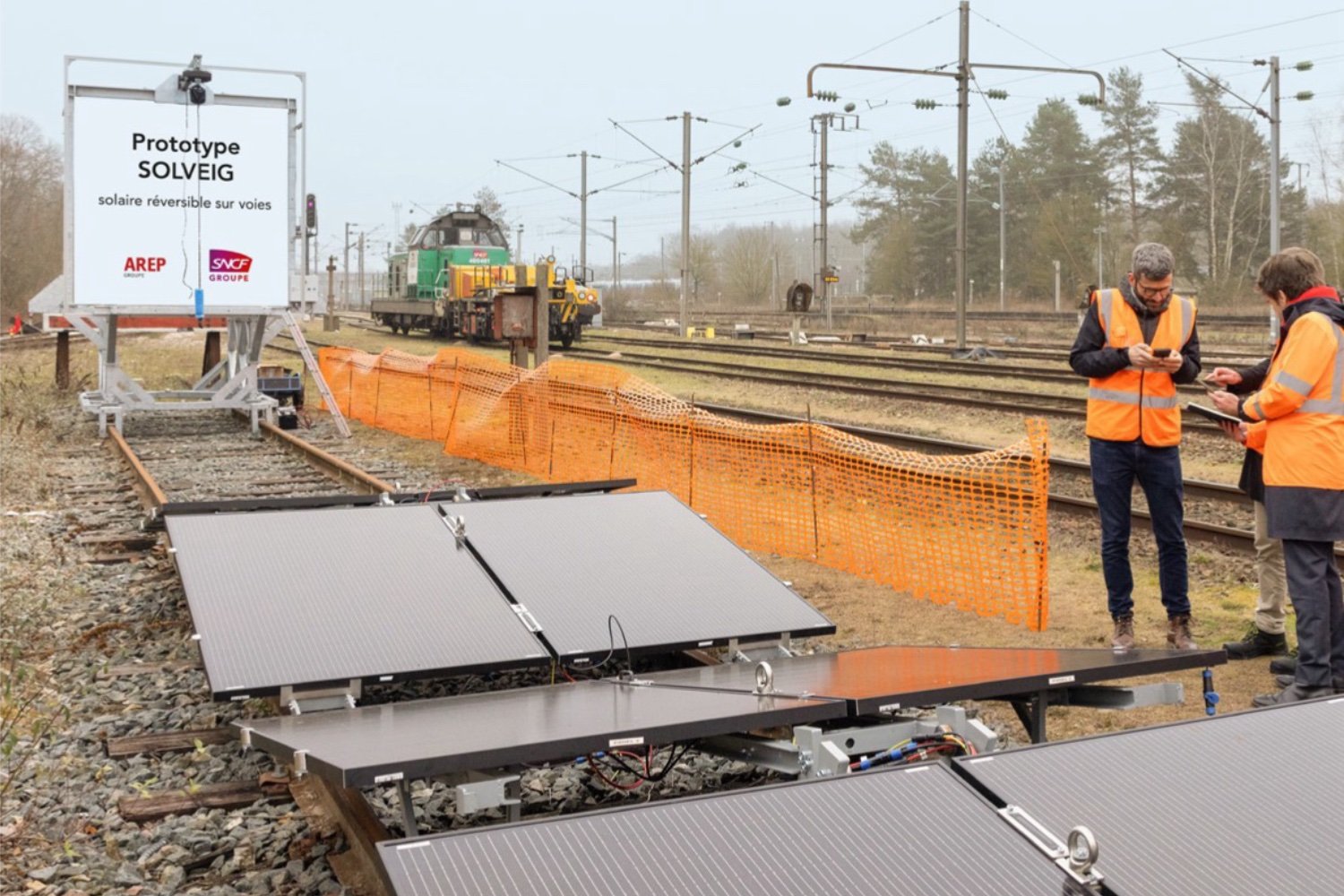What if abandoned rails became solar power plants? The SNCF, which is looking for new solutions to reduce its energy footprint, will test a concept that is as simple as it is effective: ferrovoltaism! The idea is to install photovoltaic panels on unused railway lines. No need to dig or build anything, the panels are simply installed on the rails. Better yet, they arrive there… by train! Everything is assembled in a few steps, without foundation or heavy work.
Solar panels on forgotten rails
The project, nicknamed Solveig (a nod to the Scandinavian “paths to the sun”), has been tested since January 17 at the Achères technicentre (Yvelines). The objective? Providing renewable energy for one-off needs, such as powering a construction site or an isolated site. If the results are satisfactory, Solveig could well become the ideal solution for valorizing the 7,000 kilometers of unused lines in France.
Solveig is part of a broader SNCF project: producing 1,000 megawatts of photovoltaic capacity by 2030. This represents 15 to 20% of the company’s electricity needs, which remains the largest industrial consumer of electricity in France. SNCF, via its subsidiary SNCF Renouvelables created in 2023, is exploring all means to make the best use of its vast land area: shade structures in stations, panels on the roofs of buildings or even installations along the tracks.
And this is just the beginning. In the longer term, the company plans to cover up to 10,000 hectares with solar panels by 2050. SNCF hopes not only to become self-sufficient in energy, but also to resell part of its production. A complete transformation and a huge opportunity for a company that runs 80% of its trains on electricity – energy that is expensive. We can imagine the savings if the SNCF becomes an electricity producer.
One of Solveig’s strengths is its flexibility. Unlike traditional solar installations, these panels are designed to be easily dismantled. They can be installed in segments of 20 to 30 kilometers, then moved as needed. “ With Solveig, we respond to local issues without leaving a trace », Explains Arep, the SNCF subsidiary which developed the system.
The six months of tests in Achères will verify the durability of the panels in a sometimes hostile railway environment. If the experience is conclusive, ferrovoltaism has everything to strengthen the energy transition of the SNCF, while bringing forgotten rails back to life.
🟣 To not miss any news on the WorldOfSoftware, , .











